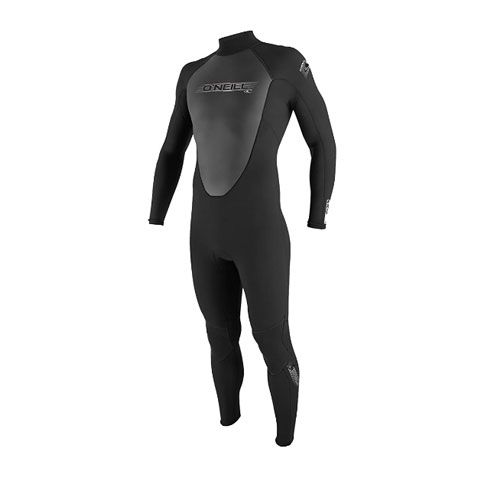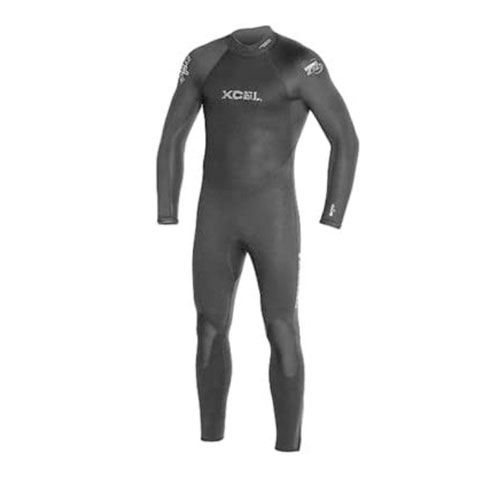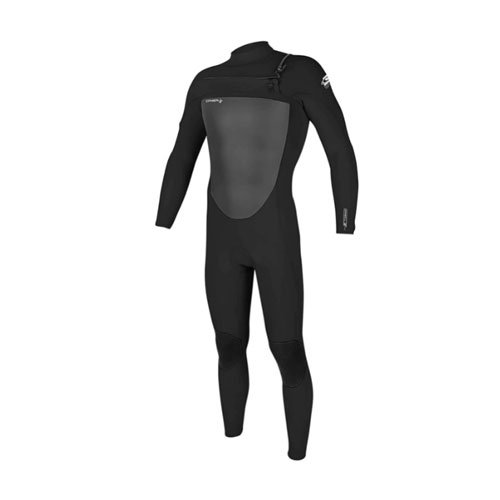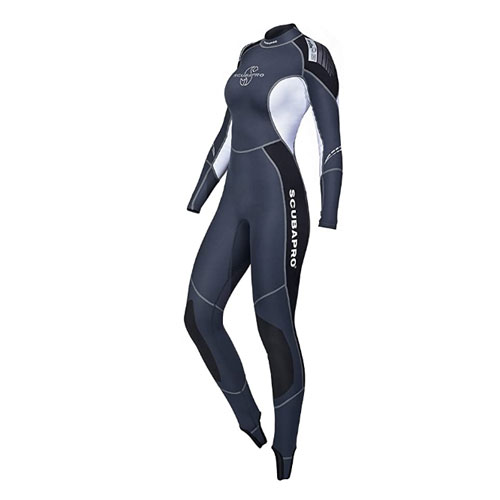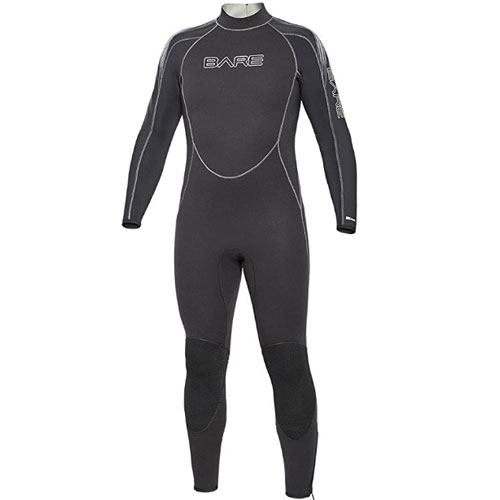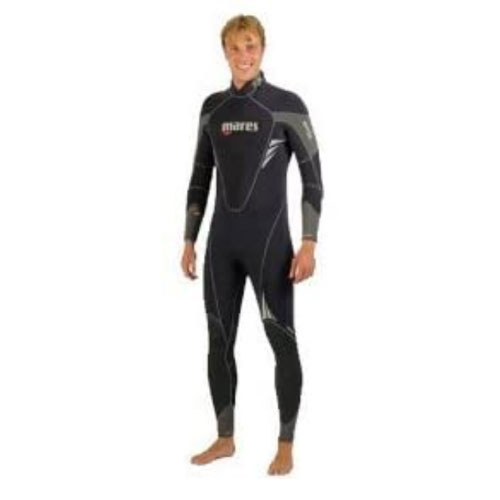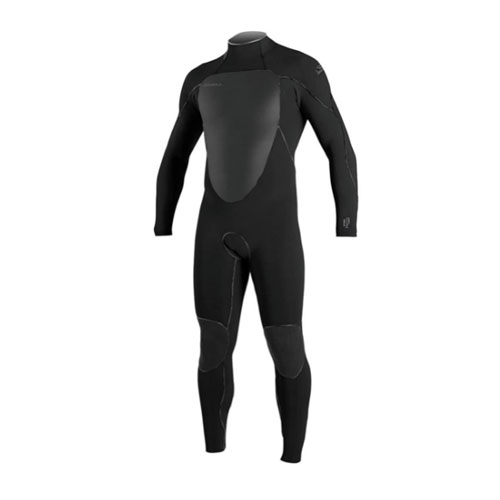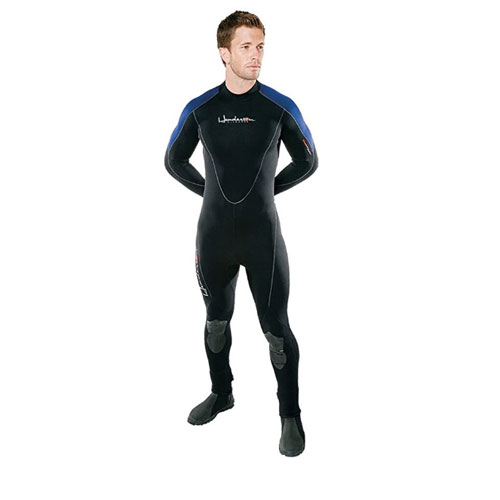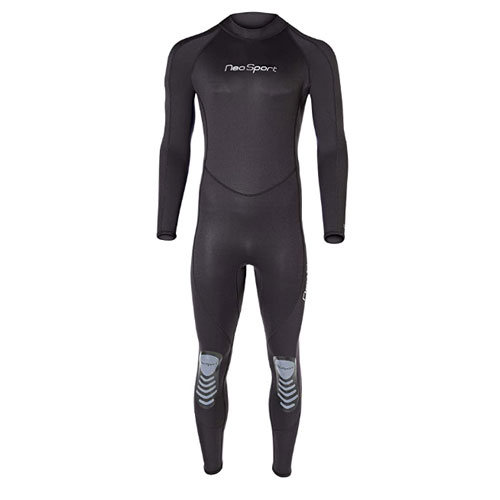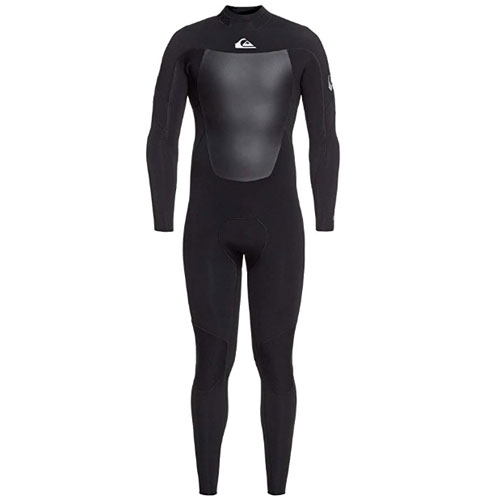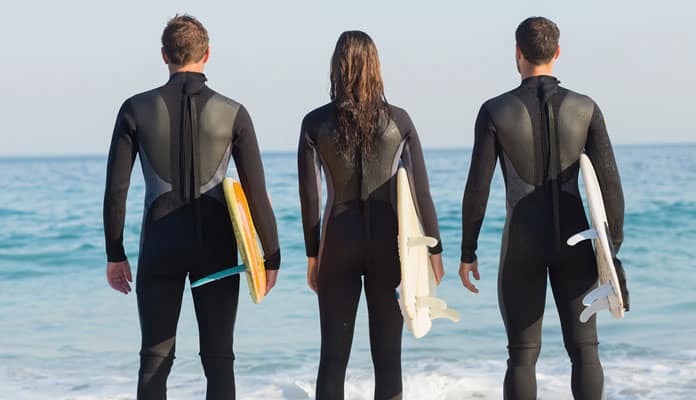
-
1.
-
2.
-
3.
-
4.
-
5.
A wetsuit has two important functions. The first is to help keep you warm. Please note it is warm, not dry. A wetsuit allows water to saturate it and traps a layer of water next to your skin. Your body heats that water which in turn provides an additional layer of insulation. The thicker the wetsuit, the better insulation it provides. However, thicker wetsuits have less flexibility, and if they are too thick for the water temperatures could lead you to overheat. The thickness of your wetsuit will also impact your buoyancy. Wetsuits are positively buoyant and the thicker they are the more buoyant they are, meaning you need more weights.
Wetsuits also protect from stings and scrapes. Very thin wetsuits and rash guards are often used just for this purpose. A rash suit is technically not a wetsuit, however, many people group them.
When looking for a wetsuit for diving, read the descriptions very closely. You will often see wetsuits that are designed for surface water sports such as surfing as being for shallow scuba diving as well.
This list includes both surface water sport suits good for shallow diving and scuba diving wetsuits for any recreational depth.
OUR TOP PICK
O’Neill Men’s 3/2mm Reactor Back Zip
- Stand Out Features - Why We Love It
- 3/2 Dual thickness
- Flatlock seams
- Knee pads
- Smooth lining
Thickness: 3 / 2 mm
Zippered: Back zip
Style: full wetsuit
EDITORS CHOICE
XCEL 7/6mm Thermoflex Full Scuba Diving Wetsuit
- Stand Out Features - Why We Love It
- Ankle zippers with lines dams
- Flexible material
- ThermoBamboo for extra warmth in the chest
- Three different thicknesses of neoprene.
Thickness: 7 / 6/5 mm
Zippered: Back zip
Style: Full wetsuit
BEST VALUE
O’Neill Men’s Epic 3/2mm Chest Zip
- Stand Out Features - Why We Love It
- 3mm Ultraflex torso, 2mm Fluidflex arms and legs
- Glued and blindstitched seams
- Maximum flexibility with front chest zipper.
- LSD (Lumbar Seamless Design) for stretch
Thickness: 3 / 2 mm
Zippered: chest
Style: Full wetsuit
ScubaPro Profile Women’s 0.5mm
- Stand Out Features - Why We Love It
- UPF-50 protection from the sun
- Molded arms and legs
- Can be used as a base layer
- Contour fit
Thickness: .5 mm
Zippered: Back zip
Style: Full wetsuit
- Stand Out Features - Why We Love It
- OMNIRED lining for heat retention
- Easy to put on and take off
- Super stretchy material
- Adjustable velcro collar
Thickness: 5 mm
Zippered: Back zip
Style: Full wetsuit
- Stand Out Features - Why We Love It
- Trilastic material
- Back Protection System
- Front zip
- Mares quality
Thickness: 5 /4/3 mm
Zippered: Front zip
Style: Full wetsuit
O’Neill Psycho Freak 3/2MM 3/2 FSW
- Stand Out Features - Why We Love It
- Technobutter 3 neoprene
- Smooth skin chest
- Double Superseal neck
- SuperSeam, the welded seams
Thickness: 3 / 2 mm
Zippered: back zip
Style: Full wetsuit
- Stand Out Features - Why We Love It
- Thermoprene material
- Contour fit
- Part of expandable thermal protection system
- GBS construction
Thickness: 3 mm
Zippered: Back zip
Style: Full wetsuit
Quiksilver Men’s Syncro Series 3/2mm Back Zip
- Stand Out Features - Why We Love It
- Lightweight design
- Split-thickness for added warmth and mobility
- Far-Infrared thermal lining
- Above-average core thermal protection
Thickness: 3 / 2 mm
Zippered: Backzip
Style: Full wetsuit
- Choose a wetsuit with some defining features or colors to ensure you are easily identifiable below the surface. Most shop wetsuits are all black, so having your own reduces any potential mix-up with others’ suits.
- Wetsuit materials should always reflect the dive conditions, so choose your fabric wisely. Some materials trap heat more efficiently than others, which is crucial when diving in colder waters.
- The size of your wetsuit is extremely important in its ability to keep you warm in cold conditions. Make sure the fit, as well as the thickness, is adequate for your location.
![]()
Scuba Diving Expert
How To Choose The Best Wetsuit – Buying Guide
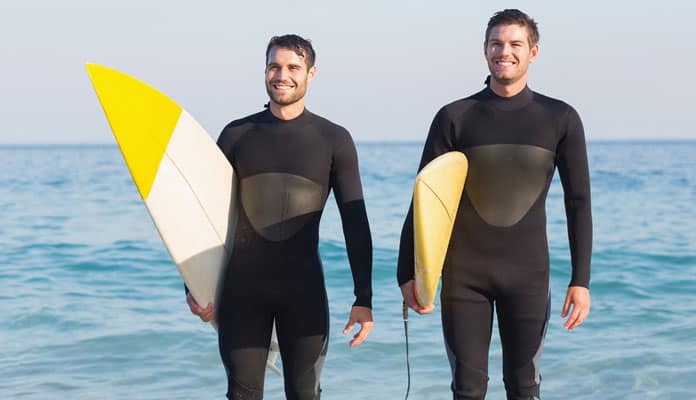
Thickness
This is the most important thing to consider when buying your suit. One of the biggest factors that should determine this is the waters you are going to be doing the majority of your diving in. The thickness used to dive in the coastal waters of Washington will be vastly different from that needed in the Gulf of Mexico. Typically, wetsuits will have between 3 mm and 7 mm of material with some coming as thin as 1-2 mm for very warm waters.
To make matters more confusing, some wetsuits come in a thickness represented by two numbers, for example, 4/3 mm. The first number will be the bigger of the two representing the thickness of the torso while the second represents the thickness of the arms and legs. This is to protect your vital organs or core as a priority. These suits give you more range of motion and mobility than ones that utilize the same thickness for the entire body. The thinner material around the shoulders, elbows, and knees allows your joints to bend more naturally and with less resistance.
As a general rule, it is recommended to go by the following table. Going by the temperature of the water, you can find your recommended thickness. It is important to take into consideration your tolerance to being cold. These are guidelines for scuba diving. Surface sports use a thinner wetsuit at the shown temperatures.
Thickness Temperature
2 mm > 85° F (29°C)
3mm 70°F – 85°F (21°C – 28°C)
5mm 60°F – 70°F (16°C – 20°C)
7mm 50°F – 70°F (10°C – 20°C)
*If you are diving in water colder than this it is recommended that you dive in a dry suit. This will add protection making your cold water dive more safe and enjoyable.
Style
Like every other piece of clothing, you put on your wetsuit will come in a specific style. There are three different styles to choose from. You must try on all of them and find the one that is most comfortable for you.
Shorty
This is a wetsuit that has short sleeves. It is also cut just above the knee and is recommended only for warmer waters. This type of wetsuit will be much more comfortable and significantly easier to get in and out of. Surfers who like to frequent the coast of California can be seen wearing this style during the summer. Shorty can be worn over a full suit to provide additional core protection.
Full or Jumpsuit
A full suite goes straight down to your wrists and ankles providing more protection. It also adds a significant amount of warmth to your dive. This is the most commonly used design for scuba divers. These suits are generally made of thicker material and can even have added insulation.
Farmer John/Jane
This is not what comes to mind when thinking about the best wetsuit. This style comes in two pieces with one that acts as an overall stretching to your ankles while leaving your arms open. The second piece is a jacket that goes over the top to keep you warm. This type of wetsuit works very well in very cold water as it provides your core with even more insulation compared to a traditional style wetsuit.
Materials
There are also many different types of materials used when constructing wetsuits.
Open Cell Neoprene
This is the highest quality material used to construct wetsuits as it is soft and incredibly flexible. The neoprene material effortlessly forms to your body which provides better insulation and keeps you warmer. This material moves effortlessly with you making you more comfortable and allowing a greater range of motion. It is also more costly and more delicate than other materials used to make wetsuits so companies combat this by adding extra padding to areas that experience the most wear and tear such as the knees.
Closed Cell Neoprene
The most commonly used material to make wetsuits is closed cell neoprene. It is a very cost-effective option which makes it more desirable for entry-level divers and surfers. This material has a rubber-like feel that is quite rigid making it very durable. The rigidity makes these types of suits more difficult to put on and take off. One drawback to this type of material is that it doesn’t insulate to the same degree as an open cell. For this reason, we suggest using this in warmer waters.
Lycra
Lycra is used for rash guards. A rash guard is similar to lightweight wetsuits for warm water diving environments. Being extremely lightweight a rash guard isn’t designed to insulate your body but rather to protect you from the sun and any underwater corals and rocks. It is a material that is used in shorty suits used for the thinner arm and leg material. Lycra is sometimes used around the wrist and ankles on a wetsuit to help keep a tight seal.
Seam Construction
Four different constructions are used by manufacturers to secure the seams. This is an aspect that can also affect the comfort of your suit. Thick seams can add pressure and discomfort to your dive – something you want to avoid at all costs.
Overlock Stitch
This is a seam stitch technology used on suits for warmer water. It is desirable because the stitch is on the inside giving the best wetsuit a clean look. Overlock stitching is recommended for water 65°F or warmer as it does let some water through the seams.
Flat Stitch
Often called a flatlock stitch it is visible on the outside of the suit. The inside seam sits flat over your body which makes it a much more comfortable option rather than the overlock stitch. This is one option that does not add bulk or bunching to the thicker areas of the suit. It is a high-tech feature that will make your day on the water more comfortable and enjoyable. As some water does penetrate your suit here it is still recommended for use in warm water.
Glued and Blindstitched (GBS)
This is similar to the flat stitch in that you will see visible seams on the outside of this wetsuit but it will be much narrower. The seams are glued together and then stitched as well which greatly reduces the chance of water seeping through the seams. This is an excellent option for people diving in colder water.
GBS with seam tape
Referred to as a fluid seal the GBS is similar to a standard GBS but incorporates a tape on the inner seams. This allows an even stronger bond which is better at reducing water from seeping into your suit than any other type of construction. This is one of the top technologies that allow you to withstand extremely cold water of 50℉ or below.
You might also like: Scuba BCDs
Size
This is a very important factor to consider when looking for the best wetsuit. Not only will it determine your comfort underwater but getting a suit that doesn’t fit properly will not protect you from the elements as well. One that is too big will let more water leak in and thus not provide adequate insulation. Getting one that is too small will make it difficult to put on and also cause stress on the seams of the suit.
Price
It is worth noting that scuba suits aren’t cheap. Ranging in price from $100 to well over $500 this purchase should be seen as an investment. As the price is higher than your average clothing buy it is important to get a quality piece that will last you for years to come. Comfort and protection underwater will allow you to get the most out of your underwater experience so it is important to get one that fits properly, even if that means spending a bit more money. A wetsuit if properly cared for can last decades.
FAQs
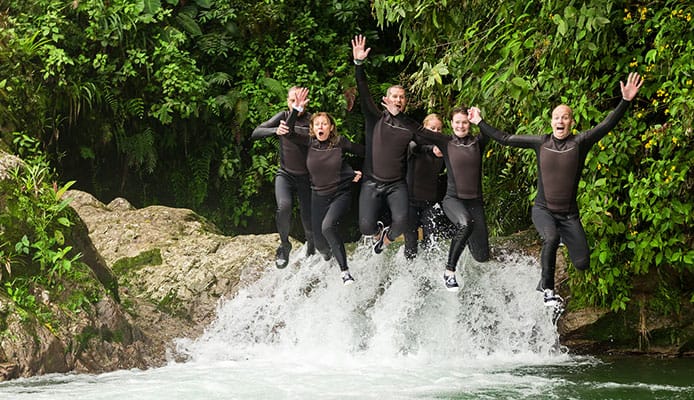
Q: How To Take Care Of A Wetsuit?
Your wetsuit can cost you a lot of money, but more importantly than that, they offer great protection. You want to take care of it for both reasons, but especially for the latter. When your wetsuit is exposed to a lot of saltwater, it can become damaged.
After you remove your wetsuit, you should rinse and soak it as soon as you can. Use fresh water to rinse the saltwater from the suit (and to rinse off any other debris). Make sure to rinse the inside and the outside of the suit. Allow it to soak so that any salt inside is diffused out. You should then hang your wetsuit inside out to dry. Do not dry in direct sunlight. Doing so will cause your suit to fade and speed up the breakdown of the suit. After your wetsuit is dry, store it in a dry and cool place, and try not to fold it.
Q: Why Do I Need A Wetsuit?
A wetsuit keeps you warm in the water, and it provides a barrier against any impacts on the water. When you are participating in a water sport such as surfing, you will be hitting the water a lot. A good wetsuit cushions that impact. When you are in the water, a wetsuit will keep you warm. It only takes a drop in temperature or a couple of degrees for the risk of hypothermia to start. Combine a wetsuit with come boots and gloves for the best protection.
Related Review: Surfing Wetsuits
Q: What Is The Difference Between A Wetsuit and a Drysuit?
A wetsuit lets the water in to form a layer between the suit and your body. This layer helps the temperature to leave your body more slowly than it would without. A drysuit creates a complete barrier between you and the water to keep you completely dry.
Globo Surf Overview
A wetsuit should be seen as an important investment with any water activity. Getting a properly fitted high-quality suit will not only ensure that you are more comfortable but it will also keep you warm and safe while at play. When surfing, a wetsuit should provide lots of mobility while keeping you warm. Oftentimes this is seen with the best wetsuit that has multiple thicknesses such as 5/3 mm.
This keeps you warm while giving your extremities added mobility. When diving, you don’t need quite as much range of motion while having proper insulation takes priority. Buying the best wetsuit will ensure that your underwater experience is comfortable and safe making it that much more enjoyable.
More Scuba Reviews:
- Dive Camera
- Bcd For Beginners
- Full Face Scuba Mask
- Dive Watches Under 200
- Dive Watch Under 1000
- Dive Watches Under 500
- Ladies Dive Watch
- Underwater Scooter
- Scuba Regulator
- Cold Water Regulator



